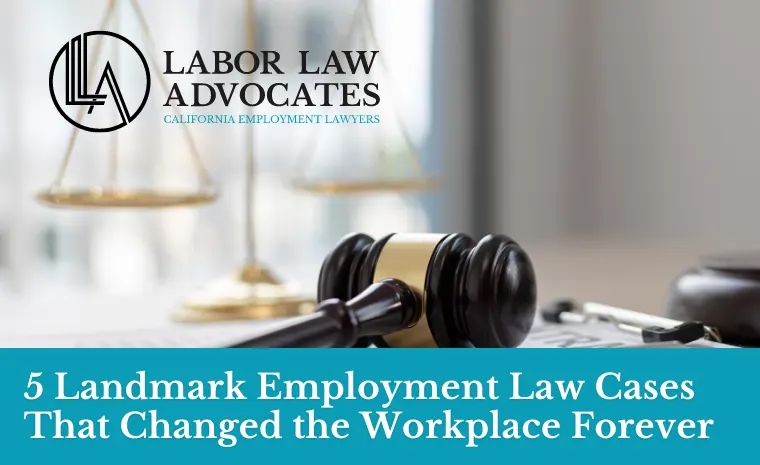Unjustly treated at work?
The United States labor landscape has dramatically evolved in the past decade after some notable cases of employment discrimination were placed under the spotlight.
Today, employees have more fundamental rights than they did decades ago, with legislation and court decisions providing increased protection against unlawful discrimination. Although the judiciary has not always favored workers, there have been important rulings that have benefited them, particularly in the state of California.
Here are five landmark employment law cases in the United States that have significantly impacted labor laws:
1. Brown v. Board of Education (1954)
In 1896, the Supreme Court upheld the legality of racially segregated public facilities as long as they were equal. This decision established the “separate but equal” doctrine, which allowed for the implementation of Jim Crow laws that barred African Americans from using the same public facilities as white people.
However, by the 1950s, the National Association for the Advancement of Colored People (NAACP) was actively challenging segregation laws in public schools, and filed lawsuits on behalf of plaintiffs in several states.
The most famous case was filed by Oliver Brown, who sued the Board of Education of Topeka, Kansas, after his daughter was denied entry into an all-white elementary school. Brown argued that Black schools were inferior and that segregation violated the equal protection clause of the 14th Amendment. While the U.S. District Court in Kansas acknowledged the detrimental effect of segregation, it still upheld the “separate but equal” doctrine.
On May 17, 1954, Chief Justice Warren authored a landmark ruling that stated the “separate but equal” doctrine had no place in public education, as segregated schools were inherently unequal. Consequently, the Supreme Court declared that the plaintiffs were being deprived of the equal protection guaranteed by the 14th Amendment.
The Impact on Workplace
The legal precedent established by the Brown v. Board of Education ruling, which overturned the “separate but equal” doctrine, served as a basis for the revoking of racial segregation in public schools, paving the way for equal opportunities in education and employment.
2. Griggs v. Duke Power Co. (1971)
Griggs v. Duke Power Co. was a landmark case that reached the United States Supreme Court in 1971. The case was brought by Willie Griggs and a group of Black co-workers, who challenged Duke Power’s unethical transfer requirements.
Until the Civil Rights Act of 1964, Duke Power had a pre-civil rights law era rule that Black employees were only allowed to work in their labor department. The pay for labor employees was much lower than the pay for employees in other departments. After the Civil Rights Act, Duke Power replaced this rule with a requirement that employees must have a high school diploma or pass two tests to transfer departments.
The NAACP Legal Defense and Educational Fund represented Griggs and argued that the tests unfairly disadvantaged Black employees. The Supreme Court agreed and ruled that the tests were not applicable to job duties in other departments and had a disparate impact on Black employees. This decision established the legal precedent that aptitude tests and other selection criteria could be considered discriminatory if they disproportionately impacted certain groups.
The Impact on Workplace

Griggs v. Duke Power Co. was the first case in the US Supreme Court to use the “disparate impact” theory, which says that if an employer’s practices have a disproportionate impact on protected groups, it can be considered discriminatory even if there was no intention to discriminate. It is one of many landmark employment law cases that significantly highlighted employment discrimination law and Title VII labor laws.
3. United Steelworkers v. Weber (1979)
United Steelworkers of America v. Weber established that voluntary affirmative action programs seeking to hire minorities who were historically underrepresented did not violate Title VII of the Civil Rights Act of 1964.
The case involved a collective-bargaining agreement between United Steelworkers of America and Kaiser Aluminum and Chemical Corporation that set a goal to fill 50 percent of craft worker trainee positions with Black workers until the percentage of Black workers matched the local labor market.
A white worker, Weber, was not selected for a trainee position despite having greater seniority than many of the Black workers selected. Weber sued, claiming discrimination against white workers, but the U.S. Supreme Court ruled in favor of USWA and Kaiser, finding that the voluntary affirmative action program did not violate Title VII.
The Court reasoned that the legislative history of Title VII showed a special focus on ensuring Black workers could secure jobs in industries from which they were historically excluded. Congress also specifically stated that Title VII did not require employers to adopt such affirmative action plans.
The Impact on Workplace
The United Steelworkers of America v. Weber case established affirmative action programs that prioritize hiring and promotion of minorities to address past job discrimination in employment and various workplaces across the US.
4. Meritor Savings Bank v. Vinson (1986)
Meritor Savings Bank v. Vinson was a landmark ruling case in 1986, in which the U.S. Supreme Court unanimously ruled that sexual harassment resulting in a hostile work environment is a violation of Title VII of the Civil Rights Act of 1964.
The case centered around Mechelle Vinson, who claimed that she had been subjected to sexual harassment during her employment at the bank by her supervisor, Sidney Taylor, and that this had led to her termination for excessive use of sick leave. Vinson alleged that she had engaged in sexual intercourse with Taylor out of fear of losing her job, and that he had fondled her in front of other employees. She also accused Taylor of raping her several times and of touching and fondling other female workers.
The US Supreme Court’s landmark decision is that sexual harassment leading to a hostile work environment is a violation of Title VII.
The Impact on Workplace
Meritor Savings Bank v. Vinson was one of the first labor law cases where the US Supreme Court recognized sexual harassment as a cause of action. This case established that sexual harassment creating a hostile work environment is sex discrimination. It means that an employer can be held liable for creating or allowing a work environment that is hostile or abusive to certain employees.
5. Ledbetter v. Goodyear Tire & Rubber Co. (2007)
Lilly Ledbetter worked for Goodyear for nearly 20 years and discovered she was being paid less than her male colleagues. She filed a lawsuit, claiming she made $15,000 less than the lowest-paid male employee with the same job title. A jury found in her favor, awarding her $360,000 in back pay and additional damages.
Goodyear filed a motion to vacate the judgment, arguing that Ledbetter should not have been allowed to challenge employment decisions from so far back in time. The district court denied it, but the Eleventh Circuit reversed the decision, and the case went to the Supreme Court.
The Supreme Court voted 5-4 that Ledbetter’s claim was time-barred by Title VII’s limitations period. Justice Samuel Alito wrote that “current effects alone cannot breathe life into prior, uncharged discrimination.” Ledbetter needed to file a claim within 180 days of a discriminatory salary decision for it to be considered timely. The Court did not think it mattered that her paychecks during the 180 days before her claim were affected by past discrimination.
The Impact on Workplace
The Lilly Ledbetter v. Goodyear Tire & Rubber Co. case inspired the Lilly Letterbed Fair Pay Act, passed in January 2009, where employers need to increase their efforts to ensure that their employee pay practices are free from discrimination and maintain proper records to substantiate the fairness of their pay decisions. The Act also extended the time period for employees to file pay discrimination claims and made it easier for them to prove such claims in accordance with related landmark employment law cases.
How Can An Employment Lawyer Help You?
Are you confused about the conditions of employment at your workplace? Or do you need help filing an unfair dismissal claim against an adverse employment action from your current employer?
Consult with the most qualified employment attorney in California for legal advice.
Labor Law Advocates has award-winning employment lawyers who specialize in labor law cases. Reach out to our team for a free consultation and to understand employment contracts, your employee rights, and options.
We are available 24/7, so call us anytime at (424)-688-3632.




